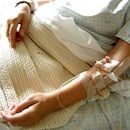
Diversity in Nursing: Male Nurses & Minorities
At 3.1 million, nurses are the largest group of healthcare professionals in the United States (MinorityNurse.com, 2014). And as America’s population has become increasingly diverse, so too has the field of healthcare, with men and minorities shifting to nursing in increasing numbers.
According to current statistics, the male nursing population is about 9.1% for Registered Nurses, and about 7% for Licensed Practical Nurses. The American Association of Colleges of Nursing (AACN) 2012 State of the Schools created a report, based on responses from 87.5% of schools with nursing baccalaureate and graduate programs. They found that 11.4% of students in BSN programs are men, as are 9.9% of students in master’s nursing programs, 6.8% of students in research-focused doctoral programs and 9.4% in practice-focused doctoral programs.
Experts attribute the growing numbers of male nurses to a decrease in gender stigma about men working in the profession, changing perceptions about the male’s role in general and the economy. With an increasingly high demand for skilled nursing care, the U.S. Census Bureau reports that the nursing profession enjoys low unemployment rates: 1.8% for RNs and 0.8% of nurse practitioners and nurse anesthetists. It also found male representation highest among nurse anesthetists at 41%. Male nurse anesthetists earned more than twice as much as the male average for all nursing occupations: $162,900 annually vs. $60,700.
Minority groups are also increasing within the nursing profession. This is a much-needed development, as several studies have shown that patients find it reassuring to receive care from someone who comes from the same ethnic or racial background. Yet recruiting more ethnically and racially diverse students requires a concerted push that should employ outreach efforts in schools and community organizations, to educate possible candidates about the opportunities available in nursing. According to Kathleen Potempa, PhD, RN, FAAN, dean of the University of Michigan’s School of Nursing in Ann Arbor, “Diversity is critical to the profession from many perspectives.”
When comparing the ethnic diversity of nurses to the general public in the U.S., the 2010 U.S. Census found that 16.3% of Hispanic Americans self-identified as Latino, 12.6% as Black or African American, and 4.8% as Asian. This compares favorably to the 2012 Bureau of Labor Statistic’s Current Population Survey (CPS) that reported that of the 2.875 million nurses in the United States, 6.1% were Hispanic, 11.5% Black and 7.3% Asian. The American Association of Critical-Care Nurses (AACN) also reported a recent study that found an increase in minority BSN students, with 72% identifying as white, 7% Hispanic, 10.3% Black and 8.8% Asian (Robert Woods Foundation & IOM, 2011).
Since healthcare has strong cultural roots, experts suggest that it is important to ensure diversity among nurses. Nurses who have similar backgrounds to their patients can more completely understand their culture, which can lead to better outcomes.
References:
American Association of Colleges of Nursing [AACN]. (2012). State of the Schools Report. MinorityNurse.com. (2014). Nursing Statistics. The Robert Woods Foundation & Institute of Medicine [IOM]. (2011). The Future of Nursing: Leading Change, Advancing Health. Biography:
Debra Wood is a registered nurse and writer living in Orlando, Fla. with her two dogs. She has received the international nursing honor society Sigma Theta Tau’s media award for excellence in journalism, as well as writer’s association honors for her creative work.




